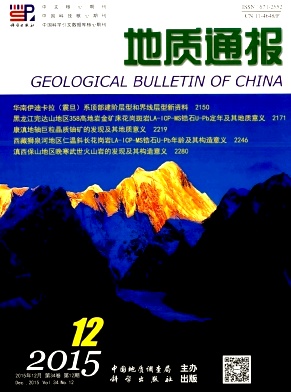ZHANG Chengjiang1, CHEN Youliang1, LI Juchu1, XU Zhengqi1, YAO Jian2. The discovery of coarse-grained uraninite in Kangdian Axis and its geological significance[J]. Geological Bulletin of China, 2015, 34(12): 2219-2226.
| Citation: |
ZHANG Chengjiang1, CHEN Youliang1, LI Juchu1, XU Zhengqi1, YAO Jian2. The discovery of coarse-grained uraninite in Kangdian Axis and its geological significance[J]. Geological Bulletin of China, 2015, 34(12): 2219-2226.
|
The discovery of coarse-grained uraninite in Kangdian Axis and its geological significance
-
1. Chengdu University of Technology, Chengdu 610059, Sichuan, China;2. No. 280 Institute of Nuclear Industry, Guanghan 618300, Sichuan, China
-
Abstract
The uraninite-bearing quartz veins from Haitain area of Miyi County along Kangdian Axis occur in the Wumaqing Formation consisting mainly of Late Proterozoic biotite-plagioclase schist, which was subjected to migmatization and controlled by ductile-brittle fault zone. Uraninite exhibits black and euhedral crystals composed of combination of cubes and octahedra as well as minor rhombic dodecahedra and cubes, with semi-metallic luster, from 0.5cm to 1cm in size. Mineral assemblage of uranium mineralization includes mainly quartz, uraninite, sphene and molybdenite. Researches show that uraninite formed in a high temperature and pressure geological environment in deep crust, derived from high temperature, acidic and reducing ore fluids. This discovery implies that Panxi area has especially favorable conditions for medium-high temperature hydrothermal vein-type uranium mineralization controlled by ductile-brittle faults in the migmatization region.
-

-
-
Access History







 DownLoad:
DownLoad: